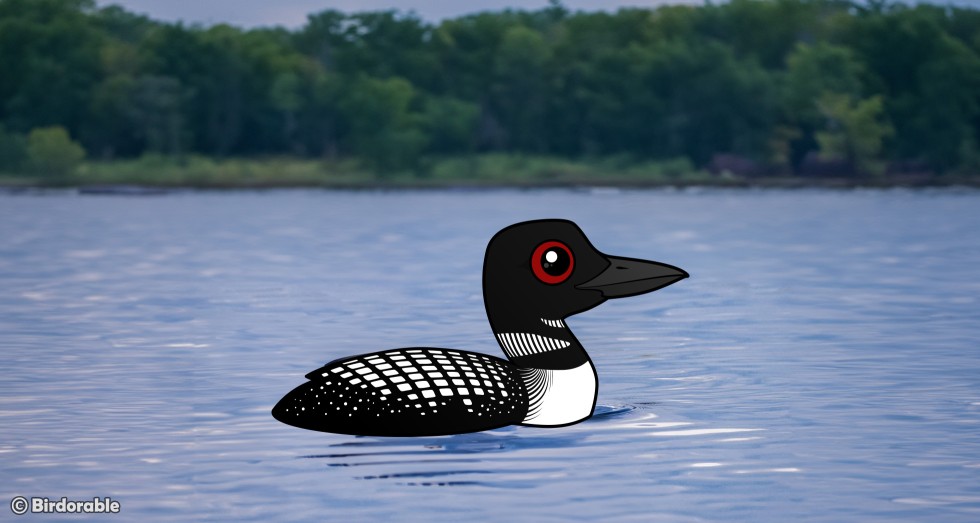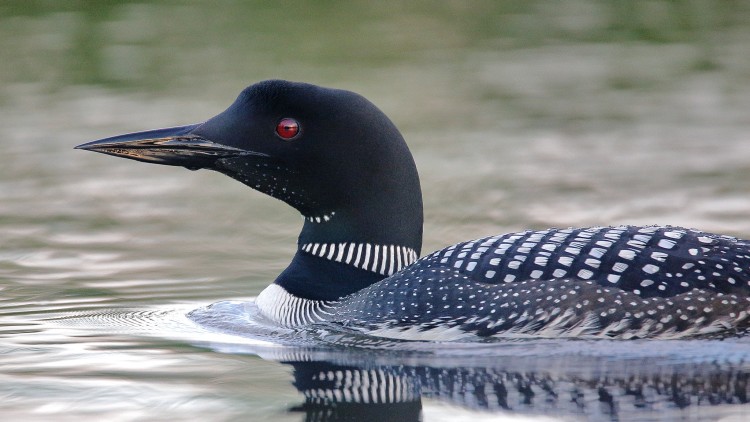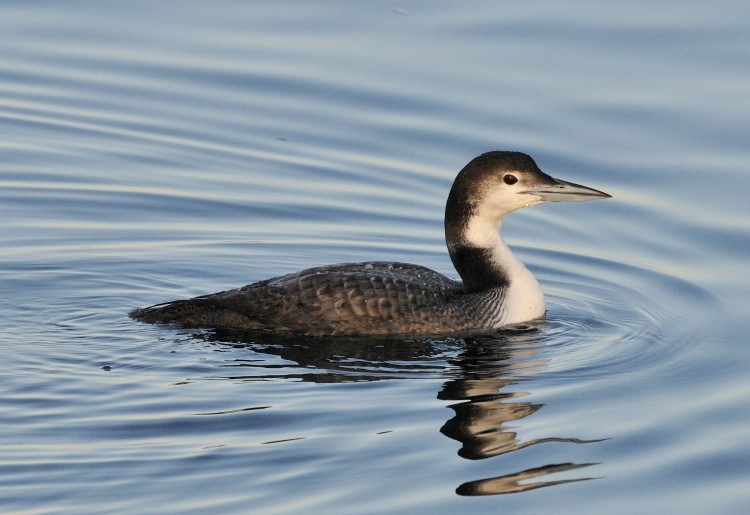ABA Honors Common Loon as 2025 Bird of the Year

The American Birding Association (ABA) has selected the Common Loon as its Bird of the Year for 2025.
The ABA's Bird of the Year program aims to inspire and educate birding enthusiasts by spotlighting a particular species annually. The program began in 2011 with the American Kestrel chosen as the first Bird of the Year. Since then, the organization has chosen a diverse range of American species to be their honored annual bird, from the Green Heron (2014) to the Burrowing Owl (2022), and from Hawaii's 'I'iwi (2018) to the Golden-winged Warbler last year.
Choosing the Common Loon for 2025 highlights the species' significance in North American birding culture and its distinctive presence in northern aquatic habitats.

Common Loon in breeding plumage by Scott Heron [CC BY-SA 2.0]
Renowned for its haunting calls and striking black-and-white plumage, the Common Loon is a symbol of wilderness across its range, which includes the northern United States and Canada. Its eerie yodels and tremolos resonate over tranquil lakes, creating an unforgettable auditory experience for those fortunate enough to hear them.
The Common Loon's selection as Bird of the Year also underscores the importance of conservation efforts. While currently stable, loon populations face threats from habitat degradation, pollution, and climate change. By focusing on this species, the ABA aims to raise awareness about the challenges loons encounter and promote initiatives to protect their habitats.
Since the beginning, the ABA has highlighted avian artists as part of the Bird of the Year selection and celebration. Minnesota artist Sam Zimmerman was chosen to be the Common Loon cover artist. Zimmerman's work delves into the landscapes and creatures of the western Great Lakes, drawing from his Ojibwe heritage to capture and preserve indigenous stories.

Common Loon in winter plumage by Bill Thompson [Public Domain]
The Common Loon has a wide natural range. It breeds on freshwater bodies across much of northern North America, as well as parts of Iceland. During the winter it can be found on large bodies of water across North America, including coastal areas; it also winters along coastlines in Europe. In some English-speaking countries, its known as the Great Northern Diver.
The species is especially recognized for its stunning breeding plumage, a hallmark of its summer presence in northern lakes. During the breeding season, this majestic bird transforms into a striking figure of black-and-white elegance, featuring a glossy black head, a distinctive black-and-white checkered back, and intricate stripes and bands around its neck. This sharp and dramatic plumage perfectly complements its piercing red eyes, which aid in underwater hunting. In stark contrast, the Common Loon's winter plumage (all we ever get to see here in Florida) is subdued and understated. The black-and-white brilliance fades into a muted grayish-brown above, with a white belly and face, designed for camouflage in open water. We were able to see loons on the first day of the year -- always a treat to see the ABA's Bird of the Year during it's special year!
Throughout 2025, the ABA plans to feature the Common Loon in various publications and events, offering educational content and opportunities for birders to engage with and learn about this iconic species. This year-long celebration encourages both seasoned birders and newcomers to deepen their appreciation for the Common Loon and contribute to its conservation.
The ABA's designation of the Common Loon as the 2025 Bird of the Year serves as a tribute to its distinctive presence in North America's avian landscape. Through artistic collaboration and educational outreach, the association seeks to inspire a collective effort to preserve and cherish this emblematic species for generations to come.
Are there Common Loons where you live? Have you seen one lately? Do you call them loons, or Great Northern Divers? Share you loony stories below!







Comments
Leave a comment
Thank you!